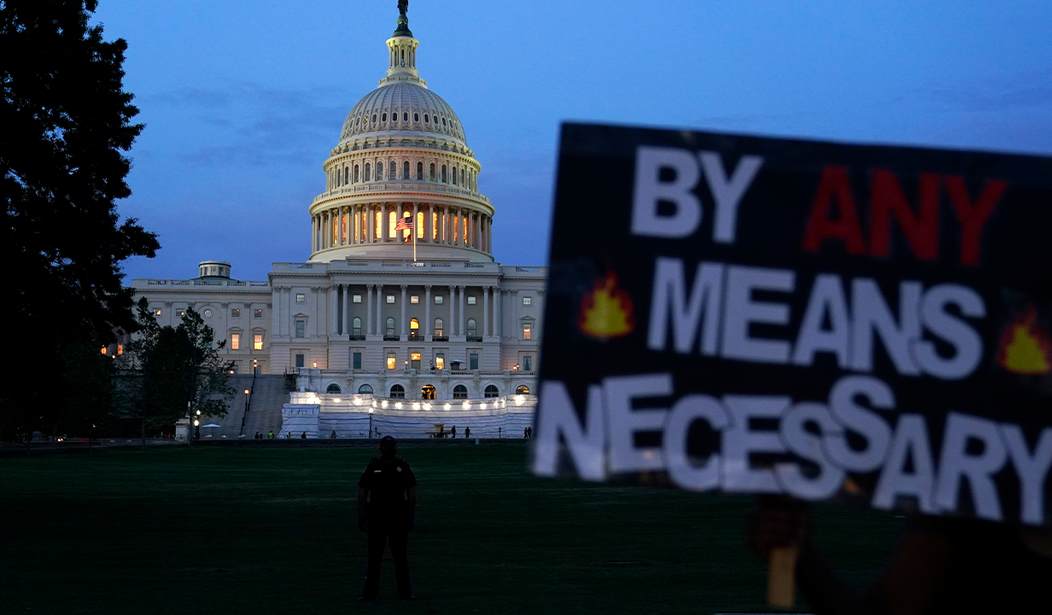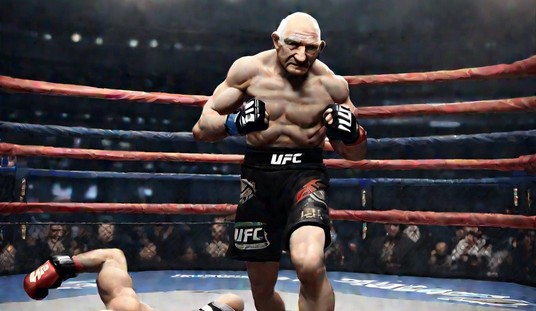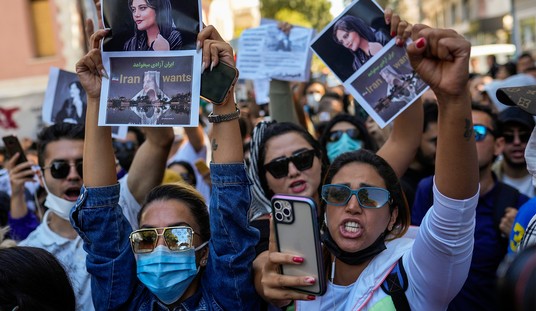Some Americans are discriminated against because of their race, but it is not who you think.
The clearest definition of “racism” is treating people differently according to their race. Systemic or institutional racism is racism “expressed in the practice of social and political institutions.”
Many American policies and laws are designed to ensure that people of all races, creeds, ethnicities, genders, and sexualities are treated equally, such as the Sixth Amendment, guaranteeing the right to “a fair and speedy public trial by jury,” the Thirteenth Amendment, abolishing slavery, the Fifteenth Amendment, prohibiting the denial of the right to vote based on race, the Nineteenth Amendment prohibiting the denial of the right to vote on the basis of gender.
President Kennedy’s Executive Order 10925, following up similar earlier orders by Presidents Roosevelt and Eisenhower, required government contractors to “take affirmative action to ensure that applicants are employed and that employees are treated during employment without regard to their race, creed, color, or national origin.” It established the President’s Committee on Equal Employment Opportunity (PCEEO). Title IX of the Education Amendments Act forbids unequal treatment based on sex (gender) in federally funded programs.
But everything changed with subsequent orders, such as President Johnson’s, that required “contractors with 51 or more employees and contracts of $50,000 or more to implement affirmative action plans to increase the participation of minorities and women in the workplace if a workforce analysis demonstrates their under-representation, meaning that there are fewer minorities and women than would be expected given the numbers of minorities and women qualified to hold the positions available.”
President Obama followed, and upped the ante, with “Executive Order 13583– Establishing a Coordinated Government-wide Initiative to Promote Diversity and Inclusion in the Federal Workforce.”
Notice the transition from “without regard to their race, creed, color, or national origin” to “increase the participation of minorities and women,” from color-blind to race and gender preferences. Between the Johnson and Obama directives, specification of qualifications—“qualified to hold the positions”—disappeared, and in its place, the unlimited instruction “to recruit, hire, promote, and retain a more diverse workforce.”
Today “underrepresented” is not based upon the pool of capable applicants, but in relation to the percentage of the general population. What this means in practice is that people of certain races and genders are given preferences and benefits, and are thus “more equal” than people of other races and genders.
During the eight years of the Obama-Biden administration, “diversity and inclusion” became the guiding principle of governments, federal, state, and municipal, of industry, and of colleges and universities. It was an ideological tsunami, washing away the universalistic standards, such as the colorblind assessment of achievement and merit, in favor of racial, gender, sexuality, and ethnic preferences.
The Supreme Court refused to stand for principle, and waffled about educational benefits, allowing preferences to remain. Sixty-five percent of Americans disagree with this decision. Sixty-three percent of blacks and sixty-five percent of Hispanics disagree with the Supreme Court decision.
In Canada too, preferences and special benefits were justified for particular racial, gender, sexuality, and ethnic populations. While according to the Canadian Charter of Rights and Freedoms, Section 15(1), “Every individual is equal before and under the law and has the right to the equal protection and equal benefit of the law without discrimination and, in particular, without discrimination based on race, national or ethnic origin, colour, religion, sex, age or mental or physical disability.”
This principle is negated in the following section of the Charter, in the interests of preferred sections of the population, for whom special privileges and benefits are granted,
Section 15(2), “Subsection (1) does not preclude any law, program or activity that has as its object the amelioration of conditions of disadvantaged individuals or groups including those that are disadvantaged because of race, national or ethnic origin, colour, religion, sex, age or mental or physical disability.” Canada has Human Rights Commissions and Tribunals that prosecute any complaint about discrimination in housing, employment, and commercial service, and also suppresses any speech that offends someone.
What “affirmative action” and “diversity and inclusion” mean in practice is that in university admissions, hiring, promotions, funding, and organizational activities (living arrangements, social gathering, eating, and ceremonial activities), in government and business hiring, funding, and promoting, certain races and genders are given preference while others are low priority or excluded totally.
In a perfect example of the bigotry of low expectations, African American and Hispanic applicants with poor academic records are given university places, while whites and Asians with much stronger academic records are refused places. It is well established that in the sciences female hires are preferred, which of course means that male candidates are excluded. White male applicants and candidates, whatever their merits, are at the bottom of everyone’s list. For every “inclusion” based upon race and gender, there is an exclusion based upon race and gender. This seems a pretty clear case of official, systemic racism and sexism.
Americans dislike racial and gender preferences. According to the Gallup poll, “Americans continue to believe colleges should admit applicants based solely on merit (70%), rather than taking into account applicants’ race and ethnicity in order to promote diversity (26%).” Fifty percent of blacks and 61% of Hispanics say that college admissions should be based on merit alone. It seems likely that hiring, funding, and other functions would reflect similar views.
Previously marginalized minorities, who suffered under prejudice, discrimination, and legal restraint, are no longer welcome in the fields in which they excelled. Jews and Asians, highly “overrepresented” in medical, professional, and academic fields, are now no longer welcome. Jews today are deemed to be “white,” now that being white is regarded as a bad thing.
Asians, themselves people of color, have offended by being too successful, and have to be excluded to make room for preferred minorities. The new marginalization of Jews is reminiscent of the 1930s when elite universities excluded Jews through strict quotas, because they were not “Christian gentlemen” and they studied too hard. As for white men, you are the wrong sex and the wrong race, so good luck trying to get a place or post or funding in our feminist dominated universities.
What justifies the establishment of two classes of citizenship, the preferred and protected and the unpreferred and excluded? In one discussion of “systemic racism,” the justification is disparities regarding wealth, income, criminal justice, employment, housing, health care, political power and education, among other factors. The assumption is that “disparities” are unjust and intolerable, that we must jettison ideas of equality before the law and equality of opportunity in favor of equality of results and outcomes, so that every individual, group, and category of people is exactly the same.
Why are “disparities” unjust? According to race and gender theorists and activists, disparities are unjust because they are the result of prejudice and discrimination. Furthermore, these theorists and activists believe that no further evidence of prejudice and discrimination is necessary; the disparities themselves prove discrimination, because without discrimination everyone would be represented according to their percentage of the population.
There are many reasons that disparities–individual, group, and category–exist. People differ from one another, have different capabilities and interests. If people do different things, it is not usually because of discrimination. For example, Asian-Americans are “underrepresented” in the jobs of forest ranger, lumberjack, and truck driver, not because they are discriminated against in these occupations, but because they are motivated to pursue higher education and enter professions. Females are “underrepresented” in the jobs of fisherman, telephone and utility pole workers, and roofing, not because they are discriminated against, but because they prefer safer, cleaner, and more comfortable jobs in offices.
Females work fewer hours, fewer days, and fewer years than men, not because they are discriminated against, but because they prefer to spend more time with their children. Whites and Asian-Americans are heavily “underrepresented” in some professional sports, the NFL and NBA, not because they are discriminated against, but because African Americans have successfully competed for those jobs.
Females are “underrepresented” in engineering, the physical sciences, and mathematics, not because they are discriminated against, but because they prefer academic fields that deal with people, such as the social sciences, humanities, education, and social work, where they are vastly “overrepresented.”
Different groups and categories of people also have different community and family cultures and family structures. Some communities are highly education-oriented and push their children to gain educational attainment, while others are less so. Some communities have strong, two-parent family structures, while others have weak, one-parent family structures. Weak families lead to detrimental consequences for children in academic performance and risks of crime and incarceration.
To claim “discrimination” as an explanation for individual and group outcomes is to ignore individual and group differences. “Discrimination” becomes an excuse artificially to impose equality where no equality exists other than in basic humanity. The imposition of “affirmative action,” in which members of some categories of people are favored, and members of other categories unfavored and excluded, is a clear case of systemic racism and sexism. In this system, population statistics determine the outcomes, and no individual receives his due, what he has earned. They can call racial and gender preferences “social justice,” but there is no clearer case of injustice.








Join the conversation as a VIP Member